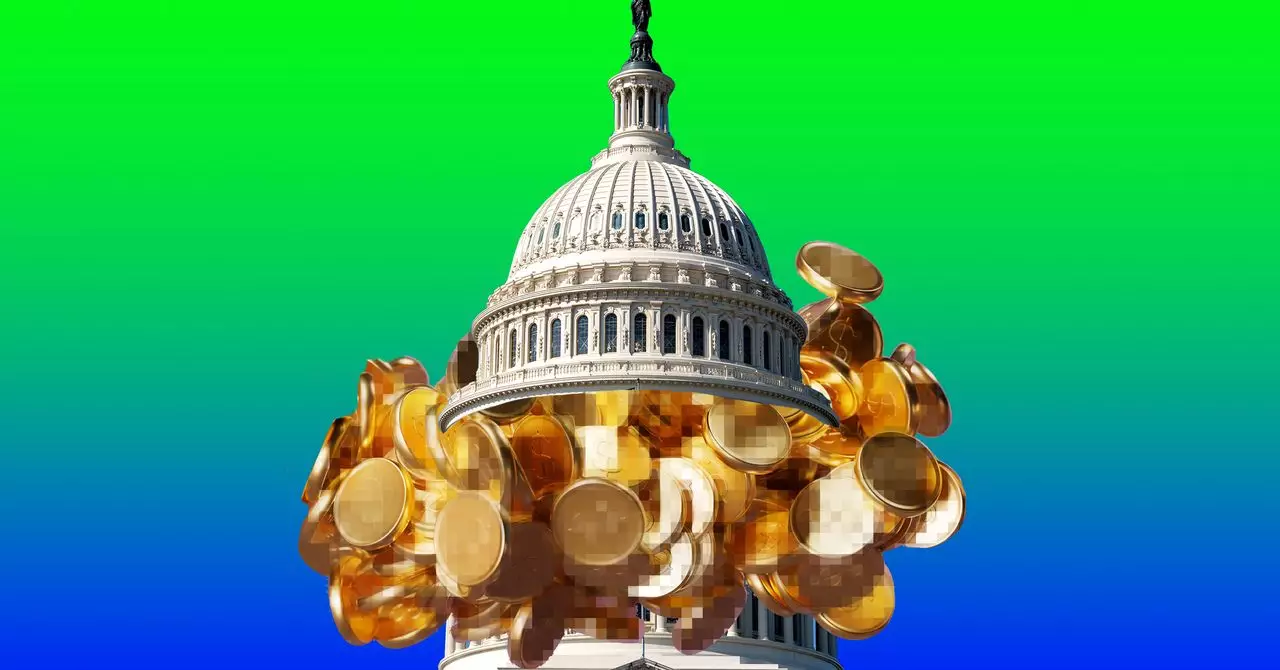Stablecoins have emerged as one of the most revolutionary innovations in the digital financial landscape. They promise to bridge the gap between traditional fiat currencies and the burgeoning world of cryptocurrencies by offering a digital asset that maintains price stability. Proponents tout stablecoins as a catalyst for financial inclusion, particularly in nations struggling with unstable economies, where access to reliable currency is limited. They believe stablecoins can bolster the US dollar’s dominance on the global stage, providing a more accessible medium for international trade and investment. By making dollar-pegged assets available in digital form, developing countries can bypass weak local currencies and banking infrastructure, fostering economic growth and integration into the global economy.
Furthermore, advocates emphasize that stablecoins could enable the US to reinforce its financial supremacy. They argue that increasing demand for dollar-backed digital assets reduces borrowing costs for the US government and increases liquidity in US bond markets. As Christopher Perkins from CoinFund confidently states, this innovation could serve as “a better whiteboard idea” for strengthening dollar sovereignty. The hope is that these digital tokens will become the backbone of international remittances, decentralized finance (DeFi), and cross-border transactions, creating a more resilient and efficient global monetary system.
Complexities and Risks: The Dark Side of Rapid Adoption
However, beneath this optimistic narrative lies a host of serious concerns. The potential risks associated with unregulated proliferation of stablecoins threaten to destabilize the very financial systems they seek to empower. Skeptics warn that if a single major issuer suffers a catastrophic failure—mismanaging reserves or facing insolvency—the fallout could trigger a ripple effect, destabilizing markets beyond any previous experience.
A misstep by a dominant stablecoin issuer could spark a crisis similar to a bank run, with investors feverishly redeeming their holdings and forcing the issuer to liquidate reserve assets rapidly. Such a scenario could cause a chain reaction where confidence in other stablecoins erodes, with the US government’s bonds and broader financial stability hanging in the balance. Critics such as Jacob Silverman highlight that allowing extensive private issuance of currency risks entrenching a system prone to “casino capitalism,” where speculative bubbles and fraud flourish unchecked.
These risks are not merely theoretical. The emergence of stablecoins backed by questionable reserves, or vulnerable to malicious actors, could undermine trust in the dollar as a global reserve currency. Moreover, if stablecoins become misused for illicit transactions or facilitated by regulatory loopholes, the damage to financial integrity and national security could be substantial.
Political Shadows and Ethical Questions: The Role of Power and Profit
Adding a layer of controversy, the intersection of stablecoins and political influence complicates the landscape even further. The recent controversy over the so-called GENIUS Act exposes potential conflicts of interest and raises questions about transparency and accountability. Critics argue that regulations are insufficiently robust to prevent powerful individuals or entities—such as those associated with former presidents or prominent political figures—from profiting unfairly from stablecoin schemes.
This criticism is exemplified by allegations that certain entities could leverage stablecoins for personal gain, effectively turning a financial innovation into a tool for corrupt enrichment. The case of World Liberty Financial’s stablecoin, which was linked to investment deals involving foreign interests and political figures, illustrates potential overlaps between digital currency markets and foreign policy. Critics fear that such entanglements threaten to turn the growing stablecoin ecosystem into a “money-making machine for the powerful,” rather than a fair financial service for the populace.
The approval of legislation like the GENIUS Act—despite its flaws—reveals a broader governmental dilemma: how to regulate an innovation that is moving faster than existing legal frameworks. While some lawmakers acknowledge the urgent need for oversight, many remain skeptical that meaningful enforcement can keep pace with the market’s rapid evolution. The fear is that only a robust regulatory regime can prevent catastrophic failures, yet political will and institutional capacity may fall short.
Final Reflections: Navigating the Future of Stablecoins
The future of stablecoins is a high-stakes game that balances innovation against risk, opportunity against vulnerability. The promise of transforming global finance is alluring, but it must be tempered with vigilant oversight, strict regulation, and an unwavering commitment to transparency. As these digital assets threaten to redefine monetary sovereignty and economic power structures, stakeholders—governments, consumers, and financiers alike—must scrutinize every move.
The debate now boils down to whether regulators can develop the strength and sophistication needed to manage this turbulent arena effectively. Without decisive action, the rampant growth of stablecoins could usher in chaos rather than convenience, exposing the financial system to avoidable crises. Yet, embracing careful innovation could pave the way for a more inclusive, efficient, and resilient monetary future. The question remains: will the promise of stablecoins unlock new heights of economic empowerment or topple the fragile foundations of our current financial architecture? Only time—and wise, courageous regulation—will reveal the answer.

